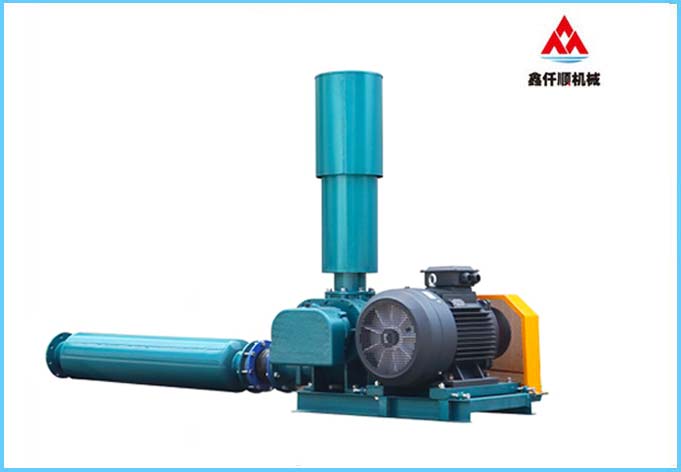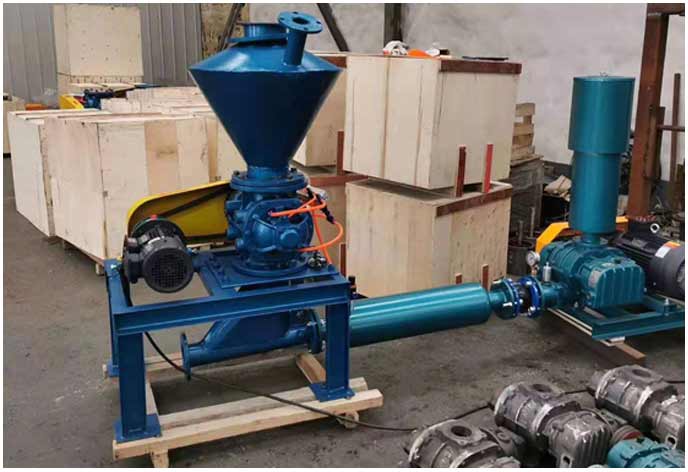1. The foundation shall be firm, the surface shall be flat and 10-25 cm higher than the ground.
2. Sufficient space shall be reserved around the fan to meet the needs of maintenance and disassembly.
3. The working environment temperature of the fan shall not exceed 40 ℃. If it exceeds 40 ℃, measures shall be taken to reduce the temperature, otherwise the service life of the fan will be shortened.
4. When the fan is configured outdoors, please set up a rain proof shed.
Precautions for fan duct installation
1. The fan pipe shall be tightly connected without air leakage, and the support shall be set at an appropriate position.
2. The pipe material shall be able to withstand the exhaust temperature and pressure. (Steel pipe shall be used as far as possible)
3. The inside of the pipeline shall be clean and free of foreign matters to prevent foreign matters from entering.
4. A one-way valve shall be installed on the pipeline to prevent the backflow high-pressure gas caused by the fan reversal from entering the fan, which may damage the fan. Note: the one-way valve shall be installed on the horizontal pipe.
5. In case of parallel operation of multiple fans, each branch pipe must be equipped with a gate valve (when one fan is overhauled, the pipe can be stopped).
6. The pipeline shall be equipped with an emptying valve to prevent the fan from starting with load. The fan shall be started with no load and then the emptying valve shall be gradually closed. In case of load operation and shutdown, the vent valve shall be opened first to confirm that the fan is not loaded, and then the fan shall be shut down.
Installation and use of model, specification and performance parameter table of high-pressure roots blower
1. The fan should not be installed in places where people often come in and out to prevent injury and scald.
2. The fan shall not be installed in the place where inflammable, explosive and corrosive gases are easily generated, so as to prevent fire disaster, poisoning and other accidents.
3. According to the direction of the air inlet and outlet and the maintenance needs, there should be adequate space around the foundation surface.
4. When installing the fan, check whether the foundation is firm, whether the surface is flat, and whether the foundation is higher than the ground.
5. When the fan is configured outdoors, a canopy shall be set.
6. The fan can be used for a long time under the ambient temperature of no more than 40 ℃. When the temperature exceeds 40 ℃, exhaust fan and other cooling measures should be installed to improve the service life of the fan.
7. When conveying air medium, its dust content shall not exceed 100mg/m3 generally.
8. Precautions for operation and use
(1) All parts of the fan shall be checked to see whether they are complete, whether the bolts and nuts are tightened, the installation quality of fasteners and locating pins, and the installation quality of air inlet and exhaust pipes and valves.
(2) In order to ensure the normal operation of the blower, it is not allowed to bear external loads such as pipes, valves and frames.
(3) Check the centering and alignment quality of blower and motor.
(4) Check whether the base of the unit is fully padded and whether the foundation bolts are fastened.
(5) Fill the oil tank with mechanical oil of specified brand into the oil level line, and the lubricating oil brand is N220 medium load working gear oil.
(6) Check whether the rotation direction of the motor meets the pointing requirements.
(7) Belt cover (protective cover) shall be installed at belt pulley (coupling) to ensure operation.
(8) Fully open the inlet and outlet valves of the blower, and turn the rotor of the blower. It should rotate flexibly without impact and friction. Only when it is confirmed that everything is normal can the blower be started for trial operation.
Operation Instructions for Model, Specification and Performance Parameter Table of High Pressure Roots Blower
Precautions before operation of high-pressure roots blower
1. Check whether the foundation bolt and other connections are firm.
2. Remove welding slag and other foreign matters in the pipeline.
3. The valve shall be in full open state, otherwise the fan will be overloaded and damaged.
4. Check and add gear oil. The oil tank has been filled with gear oil before delivery. Please check the oil level in the gear box. In the shutdown state, fill it to the midpoint of the oil window, do not add too much, or it will lead to oil leakage.
5. Grease the bearing. The fan operates normally, and it shall be filled once or twice a week depending on the actual working condition.
6. Check the tightness of narrow V-belt and the deviation of pulley. Belt pulley deviation can be adjusted with a ruler. The belt tightness can be adjusted according to the following table. After being used for a period of time, the belt will become loose, so it needs to be readjusted.
7. Check whether the power supply voltage and frequency comply with the nameplate parameters on the motor.
8. Check the pulley rotation. When looking at the belt pulley, the rotation direction of the belt pulley should be consistent with the rotation sign arrow.
9. Before starting, rotate the belt pulley manually. If there is no abnormality, start the fan.
Common problems and solutions
Main faults and causes of high-pressure roots blower
1. Insufficient air volume
① The clearance between the impeller and the engine body is increased due to wear; The troubleshooting method is to replace the worn parts.
② The fit clearance is loose; The elimination method is to adjust as required.
③ The system has leakage; The elimination method is to eliminate after inspection.
2. Motor overload
① System pressure change
a. The inlet filter is blocked or other reasons cause pressure increase and negative pressure (when the outlet pressure remains unchanged, the pressure rise will increase)
b. The outlet system pressure increases; The elimination method is to eliminate after inspection.
② Caused by abnormal parts
a. Friction of static and dynamic parts; The elimination method is to adjust the clearance.
b. Gear damage
c. Bearing damage; The troubleshooting method is replacement.
3. The temperature is too high
① Body
a. As the pressure ratio P out/P in increases
b. Because the inlet gas temperature increases; The elimination method is to eliminate after inspection.
c. Friction of static and dynamic parts; The elimination method is to adjust the clearance.
② Bearing
a. Bearing damage; The troubleshooting method is replacement.
b. Too much or insufficient lubricating oil; The elimination method is to adjust the oil volume.
③ Lubricating oil
a. Gear engagement is abnormal or damaged; The troubleshooting method is to adjust or replace after inspection.
b. Bearing damage c, poor oil quality; The troubleshooting method is replacement.
4. Impact between impellers
① Tooth displacement; The elimination method is to adjust the clearance and tighten it.
② The tooth surface is worn, so the tooth gap increases, leading to the change of the clearance between the impellers; The elimination method is to adjust the clearance.
③ Loose gears and shafts; The troubleshooting method is to replace the self-locking nut.
④ The bending of the driving and driven shafts exceeds the limit; The troubleshooting method is to straighten or replace the shaft.
⑤ Impurities are mixed in the engine body or scale is formed due to the medium; The removal method is to remove impurities or scale.
⑥ The rolling bearing is worn and the clearance is increased; The troubleshooting method is replacement.
⑦ Operation beyond rated pressure; The troubleshooting method is to check the cause of overpressure and then eliminate it.
5. Radial friction between impeller and casing
① Clearance value; The elimination method is to adjust the clearance.
② The rolling bearing is worn and the clearance is increased; The troubleshooting method is replacement.
③ The bending of the driving and driven shafts exceeds the limit; The troubleshooting method is to straighten or replace the shaft.
④ Operation beyond rated pressure; The troubleshooting method is to check the cause of overpressure and then eliminate it.
6. Friction between impeller and wallboard
① Clearance value; The elimination method is to adjust the clearance.
② The impeller and the end face of the wallboard are attached with impurities or medium scaling; The removal method is to remove impurities and scale.
③ The rolling bearing is worn and the clearance is increased; The troubleshooting method is replacement.
Word tag: high pressure roots blower
Article address: //wuhanzhcs.com/html/news/n02/929.html










